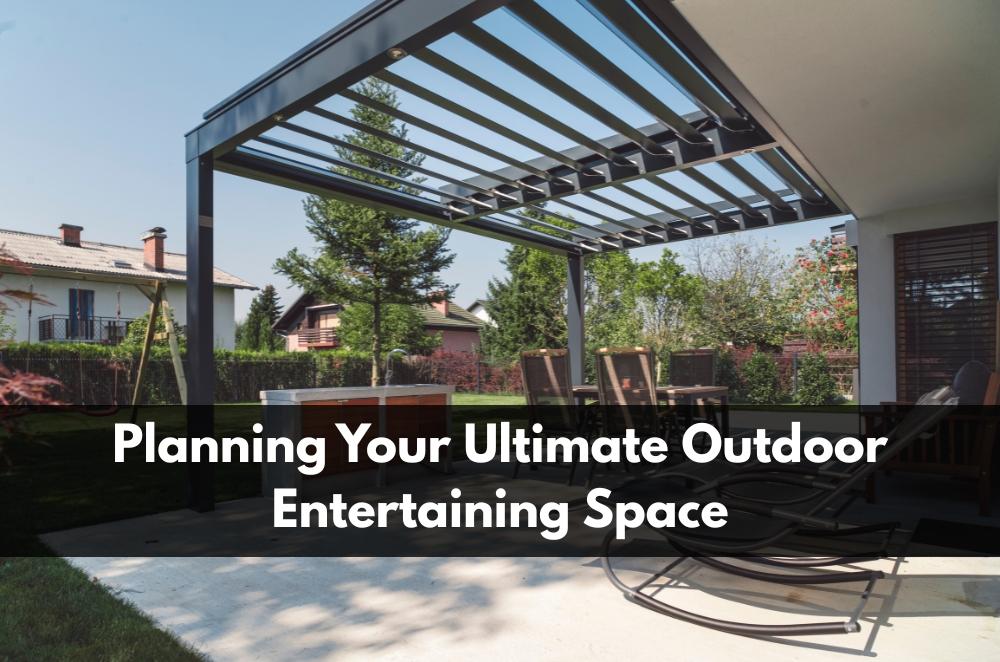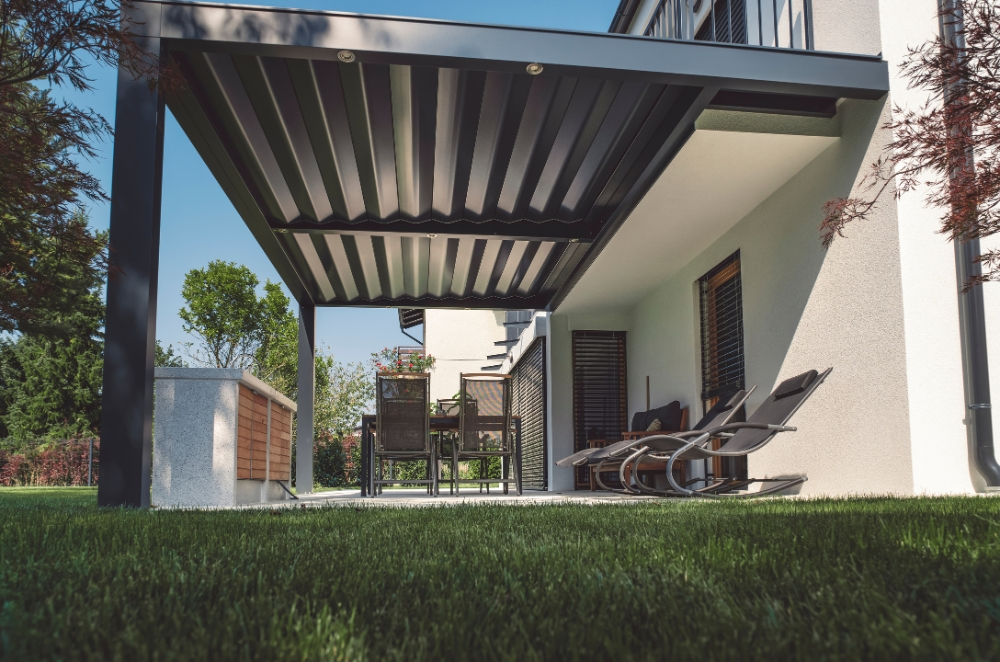Planning Your Ultimate Outdoor Entertaining Space

Great outdoor areas don’t happen by accident; they come from a few smart decisions made in the right order. Read the site, chase dependable shade, and keep the layout honest about how you actually spend time outside—weekday dinners, weekend lunches, quiet cuppas at 10 am. I’ve learned (after a few wobbly DIYs) that early choices around orientation and drainage do more for comfort than any styling. If you want a clear reference while comparing options, browsing professional pergola installers helps frame what’s possible across spans, finishes, and fixings—then you can tailor details to your block rather than to a catalogue.
Map how your space really works
Before you price materials, spend a morning noticing where heat pools, how the wind threads the fence, and where you naturally sit down. Those observations guide everything—size, placement, even the angle of slats.
-
Sun paths: Track morning to late arvo: set shade for the worst glare, not the prettiest light.
-
Breeze lanes: Leave two clear openings so air can pass through; still air is hot air.
-
Sightlines: Protect neighbour privacy and your own; screens can filter views, not just block them.
-
Traffic flow: Keep a straight line from the kitchen to the table; every bend gets annoying on busy nights.
I sketch with chalk first. Sitting on a milk crate where the table might go tells you more than any plan—how eyes squint at 3pm, whether smoke drifts toward seats, which corner always gets the good breeze.
Shade, orientation and airflow (comfort first)
Shade is the engine of comfort. Get this right, and lighting, furniture, and planting all work harder with less effort. Think layered shade—overhead, then vertical screening—with angles that change the feel across the day.
-
Overhead logic: Rafters or slats that run east–west tame midday glare; north–south favours morning and late light.
-
Vertical help: Screens on the low sun side catch glare without turning the place into a cave.
-
Air in, hot air out: Higher openings let heat bleed upward; low inlets feed the breeze without gusts.
-
Summer vs winter: Leave sun in when the angle drops; shade only where it really hurts.
For fundamentals that keep you honest, the government primer on passive design shading explains why overhang depth, orientation, and seasonal sun angles matter more than guesswork. It’s a helpful check before you lock dimensions.
Picking structures and materials that age well
Form follows climate. Choose a structure that suits your block and a finish you’ll actually maintain, then the area stays good-looking without weekend-long chores.
-
Structure choice: Freestanding suits tricky walls and easier drainage; attached keeps travel short from inside.
-
Span and posts: Go wider with fewer posts where people walk; add a post near garden edges where roots hold.
-
Finish durability: Powder-coated aluminium shrugs salt and heat; good hardwood loves oil but wants attention.
-
Hardware discipline: Stainless fixings near coast or pool; concealed brackets for tidy edges and fewer snags.
I once oiled a deck religiously the first year, and then life happened. Switching to lighter-colour boards and a low-sheen, longer-wear finish cut maintenance hours dramatically. Honest about upkeep? You’ll enjoy the space more, longer.
Layout, power and lighting that make nights easy
Evenings decide whether an outdoor space becomes a habit or a “sometime” treat. Layer light, simplify switching, and put power where cords won’t trip ankles.
-
Light layers: Low path markers for movement, soft wall wash for mood, and a focused task point by the barbecue.
-
Glare control: Shield fittings and bounce light off surfaces; bright bulbs at eye level kill conversation.
-
Socket sense: Covered outlets near the cook zone and table; fewer leads, fewer headaches.
-
Simple scenes: One button for “Dinner,” one for “Late chat.” If guests can’t use it, it’s too complex.
A small dimmable lantern on the table has saved many evenings—warm light, zero glare, people lean in and keep talking.
Surfaces, drainage and low-fuss maintenance
Comfort underfoot and dry thresholds matter more than you think. Design those early, and the area stays friendly after storms and footy nights.
-
Slip resistance: Choose textures that grip when wet; gloss looks slick and acts slick.
-
Falls and drains: Gentle pitch away from doors, hidden strip drains where needed, and no ponding under chairs.
-
Edge protection: Use solid restraints on pavers so lines stay true through heat and rain.
-
Wash-down reality: Put a hose bib where you actually clean; short routines beat heroic scrubs.
I keep a deck brush on a hook by the tap. Five quick swipes after a windy night prevent an hour on Sunday—small habits, big payoff.
Scale for small backyards (clever shade on compact sites)
Tight sites can feel generous with proportion, a restrained palette, and shade that “floats” rather than blocks.
-
Proportion rules: Keep posts slimmer and colours lighter; space breathes when edges recede.
-
Multi-tasking: Bench seating doubles as storage; planters act as edges and wind breaks.
-
Light roof, dark floor: Cooler overhead, grounded underfoot—rooms read larger and calmer.
-
Borrowed views: Frame a canopy or sky slice; your eye reads depth even in tight courtyards.
On tight blocks, shade-first detailing—captured well in smart small pergola design—leans on careful slat angles, modest spans, and restrained colours so the space feels open rather than boxed in.
Budget, approvals and a calm schedule
Money behaves when the scope is clear and the quotes are comparable. Time behaves when you respect lead times and weather.
-
Apples-to-apples: Standardise quotes with the same spans, posts, coatings and lighting.
-
Allowance honesty: Put real numbers on finishes so surprises shrink at install time.
-
Lead times: Order roofing, fixings and lighting early; they’re the pace-setters.
-
Weather float: Hold a buffer for wet weeks; outdoor work always meets the sky.
Climate-first proportioning and calm material choices to be mentioned when designing pergolas that suit Aussie homes—help structures sit lightly on the block while ageing well.
Bringing it together (so the space earns its keep)
Outdoor rooms work when they’re honest about climate and habit. Start by reading the block, then shape shade to your worst glare, not your best morning. Let airflow in and hot air out. Choose structures and finishes that you’ll maintain, not just admire, and keep surfaces kind underfoot with subtle falls away from thresholds. Light with layers so eyes relax at dusk, and put power where cords won’t snag ankles. Budget for the parts you feel daily—shade, seating, lighting—and buy time back with simple storage and a weekly five-minute reset. Once everything is in, resist the urge to overfill; space is a feature. The best sign you’ve nailed it? Guests stop talking about the weather. They sit, eat, and stay. And on Monday morning, the place is easy to reset—no drama, just a space that works the way your week does.






